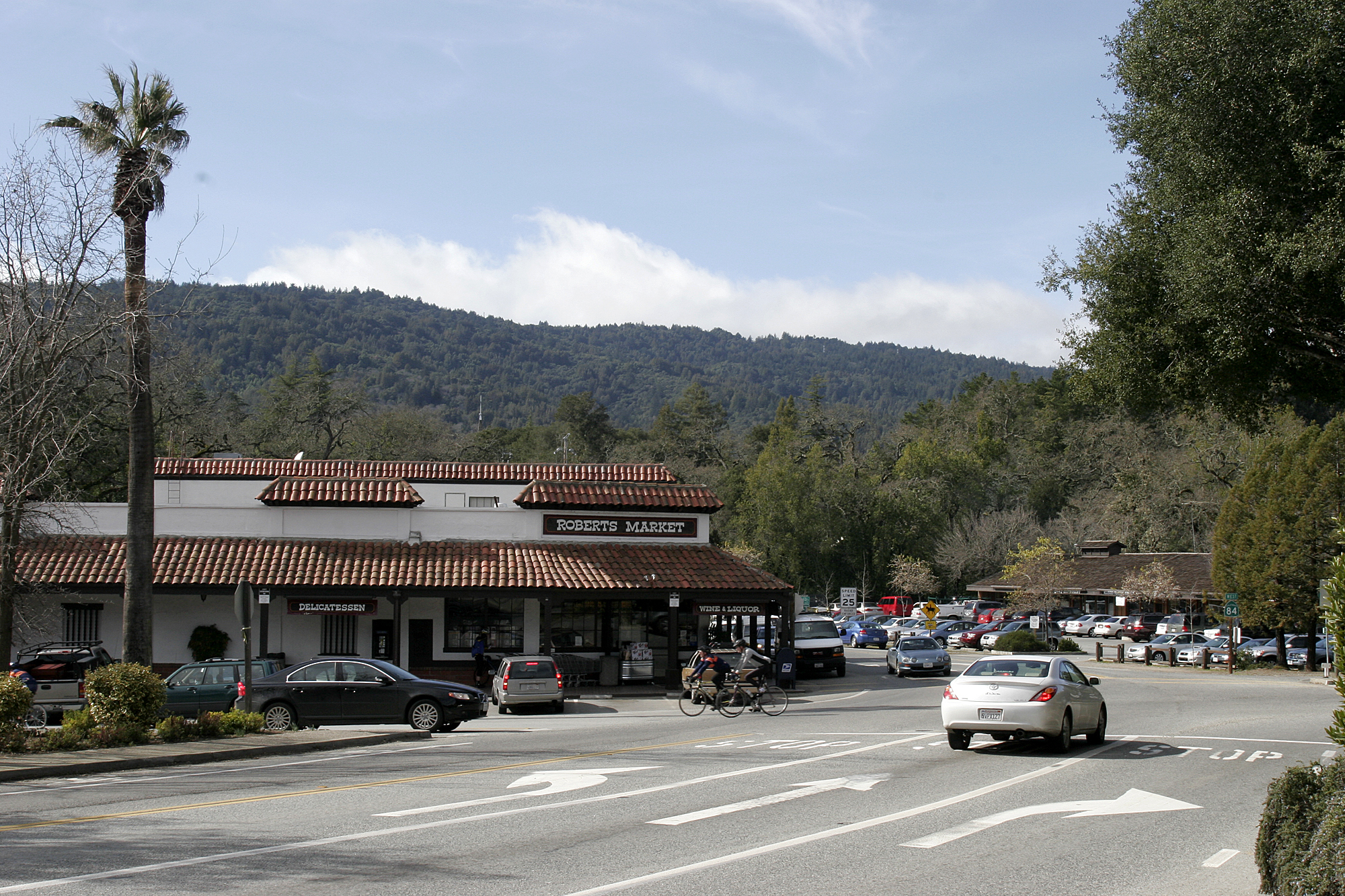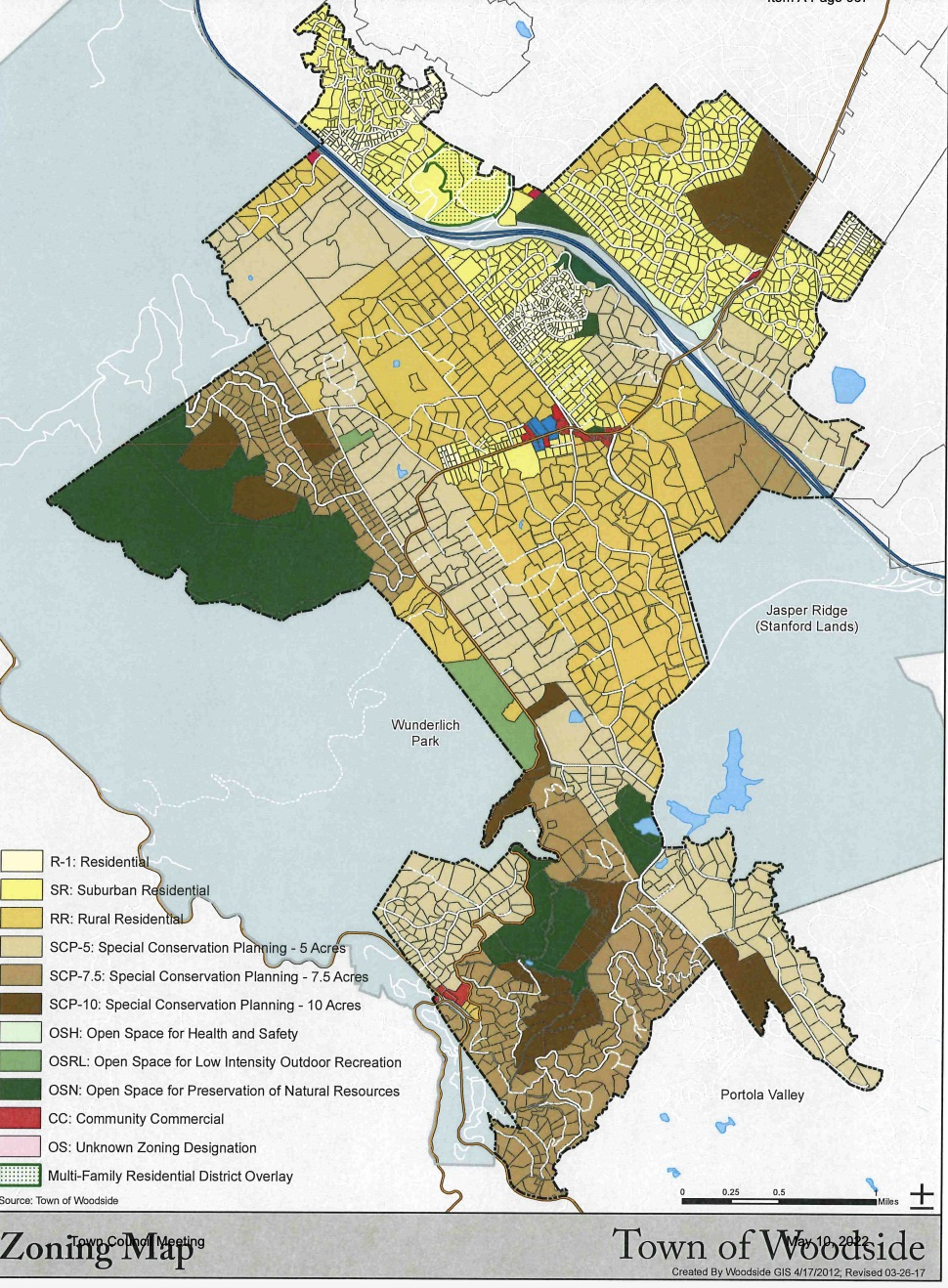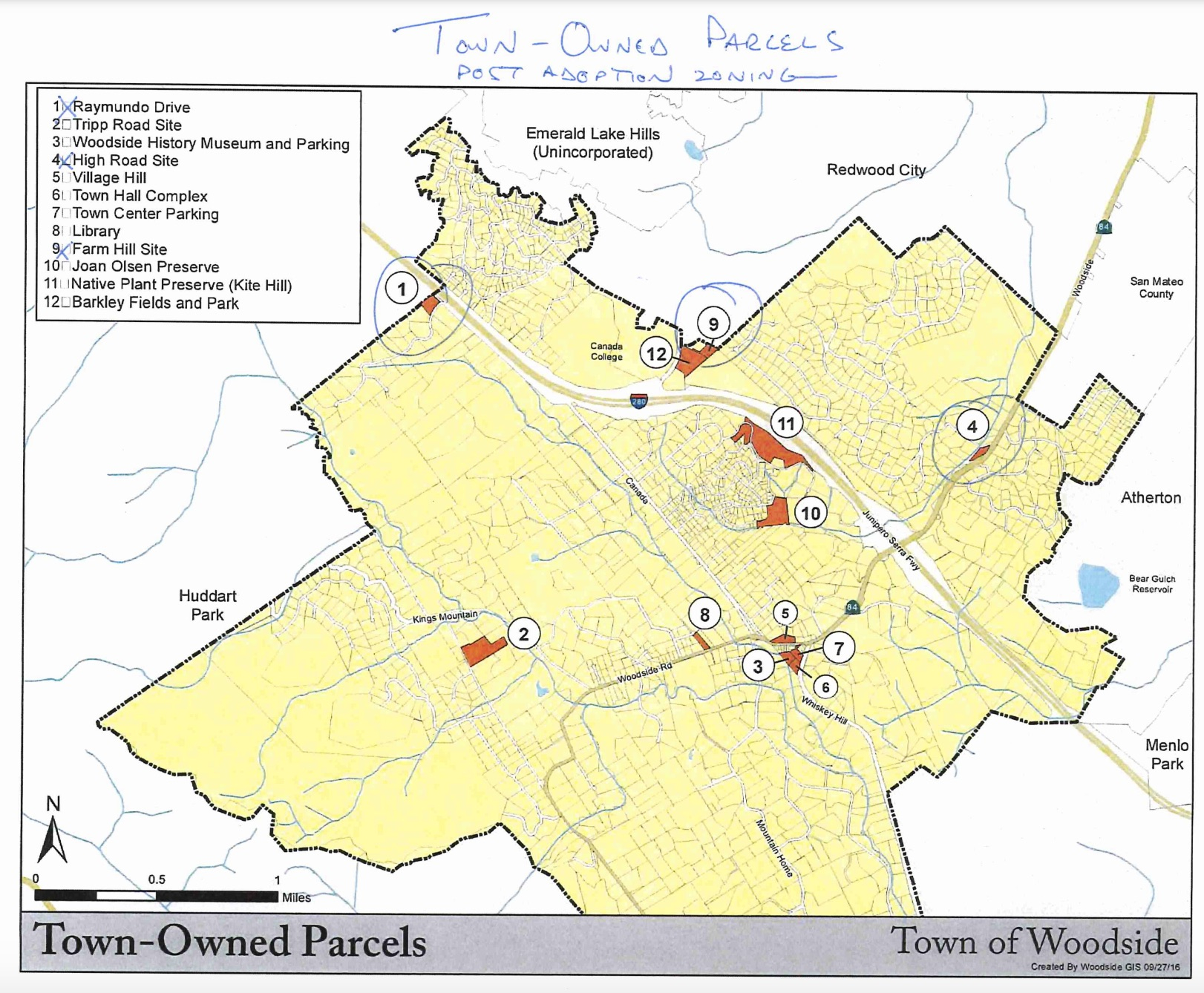With Woodsiders up in arms about potential upzoning of parcels of land, and chasing a deadline to submit housing plans to the state, council members Brian Dombkowski and Chris Shaw teamed up last month to craft a better plan.
The two both attended an April 25 Planning Commission meeting in which commissioners passed a draft housing element, without consensus, that included increases in housing density — 20 units per acre. Residents wrote the town about their concerns that the plan could pose fire and earthquake risks and there were infrastructure constraints like lack of access to sewage systems.
Each councilman spent about 30 hours over a six-day span gathering feedback from staff and residents about how to improve the draft element. The pair then drafted a counterproposal, which Councilwoman Jenn Wall dubbed the "Shawkowski" proposal (much to the amusement of her colleagues and residents). After five hours of discussion and public comment on Tuesday, May 10, the Woodside Town Council voted 7-0 to send the Shawkowski plan to the state over the commission plan.
"We needed a workable plan we could debate at council," Shaw said. "If we didn't, it would have been a 10-hour meeting and people would have been yelling and screaming."
The planning is all part of the state's 2023-31 Regional Housing Needs Allocation (RHNA) process. The town is assigned 328 units, compared to just 62 last cycle. The proposal also includes a 20% buffer, so, in total 394 units are included.
"The plan can't just be B.S.," Shaw explained. "You can't say 'we're going to build 500 ADUs because HCD (the state Department of
Housing and Community Development) will throw it back in your face."
The Shawkowski proposal calls for more accessory dwelling units (ADUs) and fewer units in the commercial corridor than in the commission's plan. It also only considers town-owned properties for higher density zoning.
The draft plan outlines where new housing could be built in town and how much:
"We have heard the public ask that our final proposal spread the density burden throughout the town, and to do so in a manner that respects our rural character, to the degree that may be possible," Dombkowski and Shaw wrote in a May 5 memo to the council, calling the called the commission's proposal "unacceptable." "We offer this as a compromise despite our general discomfort with the exercise. We believe our choices range somewhere between bad and less bad but also understand Woodside's need to be part of the solution, and do our part, under the assumption that significant challenges to this legislation will not emerge over the coming cycle."
The Town Council made some modifications to the Shawkowski proposal. It opted to increase accessory dwelling units (ADUs) projections to 200 units.
On five sites identified for developing multi-family housing, three of which are town-owned, the council opted to decrease density to 10 units per acre instead of 20. It also acknowledged that the sites in the commercial corridor, at 10 units per acre, would not be able to qualify as affordable housing.
The plan also includes 80 units of multi-family housing at Cañada College. The town previously thought it'd only be able to designate 40 units of housing, but the community college let the town know on Monday, May 9, about its additional need, staff said during the meeting. There are currently 65 units of housing at Cañada College.
Not leaning into ADUs, buffer
Town staff and Town Attorney Jean Savaree met with state housing department (HCD) staff on April 1 to discuss the town's focus on increasing the development of ADUs, according to a town staff report. Town staff described their intent to send out a survey to property owners to gauge their interest in building ADUs over the next 8-year period, as well as discover any obstacles causing property owners to not build ADUs.
"HCD staff indicated general support for focusing on ADUs but cautioned that the housing element RHNA plan still needs to project future units based on historic production unless it has solid evidence showing a larger number of units would be constructed during the 8-year period," the report states. "HCD staff also cautioned, however, that the town's housing element would likely be subjected to additional scrutiny during its review for certification if it relied too heavily on one type of housing to meet the town's allocation."
HCD staff also said that varied housing types are necessary to provide a diversified housing stock that would provide housing access to a wider population, including but not limited to, different income levels, families and individuals working in the area, and access to town services and amenities."
In early April, the town surveyed residents to gauge their interest in constructing an ADU or ADUs on their property as well as understanding what residents believe are the barriers to their construction. As of May 3, the town had received 260 responses to the survey. Of the respondents, 188 indicated that they are interested in constructing an ADU or ADUs on their property between now and 2031. However, only 114 of those indicating an interest have provided contact information to allow for Staff to follow-up. The majority of the 188 respondents (64%) indicated that they would be interested in constructing one ADU. Some 25% said they would be interested in constructing two ADUs and the remaining 11% indicated an interest in building three or more ADUs.
"While an encouraging response, the survey questions and responses also acknowledge that there are constraints to the construction of ADUs," according to the staff report.
Constraints include: design and construction costs; permit costs; and the ability to connect to sewer or increase the existing septic size.
Although the town can't address design and construction costs, it could reduce permit costs paid to the town and consider modifying wastewater rules (for example, allowing septic systems in up to 50% slopes), according to staff.
Housing on town-owned lands
The town is interested in partnering with an affordable housing company like MidPen Housing or Habitat for Humanity, to pay for building housing on three town-owned parcels identified in the draft housing element for potential new housing, Shaw explained.
It's important that these aren’t rental units but homes for sale, so that people who work in town can put down roots, he said.
"It's kind of a moral obligation that we create that opportunity," Shaw said.
Interest in housing policy
The topic of housing is of great interest to residents. Over 100 attendees logged in on Zoom and residents crowded Town Hall to make comments. Some 32 members of the public gave comments on the topic. The town also received a number of letters against upzoning neighborhoods to 20 units per acre, which are included in the staff report.
Town Manager Kevin Bryant said residents seem to understand hitting the RHNA numbers is a Herculean task and he doesn't get a sense the people are blaming the town.
One point of contention was the plan for building 20 units of housing per acre at a lot at the corner of Runnymede and Raymundo; one acre of the lot at 10 Haciendas Drive; and one acre of the lot at 773 Cañada Road.
Mayor Dick Brown opened the May 10 meeting by expressing his discontent with the state housing mandate. He also said he'd like to persuade state senator Josh Becker, D-Menlo Park, and state assembly member Marc Berman, D-Menlo Park, to change their thinking about housing.
Wall said she'd like to make it clear the statements the mayor made were his personal viewpoints and he was not speaking on behalf of the town or the council.
Penalties for noncompliance
Local governments that fail to comply with state laws regarding their respective housing element, or fail to implement programs identified in the housing element, could face significant exposure to liability, according to the state. Courts may remove the local government's land use and planning authority and they could be subject to judgments and fines of up to $100,000 per month.
The town could also lose its authority to issue building permits if the housing element is not compliant with the state law, according to an April 25 staff presentation.
In nearby Atherton, one resident recently went so far as to suggest the town fight the mandate by refusing to submit a plan to the state and calculated how much it might cost the town in fines.
Next steps
Once the town finalizes Woodside's draft housing element based on the council's feedback last week, the public will have 30 days to comment on it, according to Bryant.
The town will then submit the proposal to the state, which has 90 days to review it and provide feedback.
The town must adopt its updated housing element by January 2023.








Comments